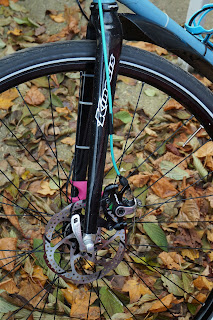Had another extremely pleasant
and productive photoshoot last week, this time at Studio Six in Writtle https://studiosixchelmsfordhire.wordpress.com/2015/06/24/studio-six-website-is-up-and-running-well-not-quite-but-this-will-do-nicely-until-it-is/ . Well-equipped and spacious, Kathleen was the
perfect host on hand with tea and skilled studio support.
Sony A6000 played nicely with
remote flash triggers, suggesting it’s a temperamental streak with the older
Alpha bodies. I’ve another studio shoot lined up after the core bike show and a
February (location) gig in Peterborough.
Building rapport and
communication are crucial to a comfortable experience and ultimately, high
quality images. In the main, experienced professional models have required very
little direction and during the first hour, I prefer them to lead. Past this
point, a more experimental, collaborative flavour takes hold.
My stance is to communicate in
detail, the moment a shoot is booked, developing rapport and a clear
understanding of both model and photographer. This preparation avoids ambiguity
and establishes the other’s comfort zones. References certainly help but life
experience and a highly attune intuition are equally important.
Legally, in a shoot where the
model is paid, images I take are my property and can be used accordingly.
However, I work with the model and will only release/use those that both
parties are comfortable with.
I read people very quickly and
politely swerve those, who raise red flags. Safety for model and myself are
paramount. I will never work alone-a third party (ideally neutral and female)
must always be present. Again, I graciously decline anyone indicating
resistance, or failing to grasp my reasons for doing so.
I’ve also been approached by
Instagram “influencers” offering me the “opportunity” of exposure i.e. I
chauffeur them to locations, shoot all day, hand them the unedited images
afterward, cannot add any watermarks, or indeed receive public credit…
As a marketing case study,
yes, there’s a lot to be learned from them. However, anyone buying into this
“Power of Social media exposure” line with no money, credits, or rights is
genuinely stupid.
By contrast, TFP (Trade for
portfolio), where both parties exchange skills and time is perfectly
acceptable, in certain circumstances.
Just as “You do the plumbing for my extension, I’ll plaster your walls”
might be.
Sabre tooth man flu in
remission, fettling also resumed. Soma fabrications Shikoro tyres came up at
36mm when I measured the front (at 85psi), suggesting the Ilpompino’s rear
triangle might also swallow one without tickling the chainstays...
Lo and behold, it did.
Admittedly clearance was as close as I’d feel comfortable with but acceptable,
nonetheless. I also discovered a couple of spare Co2 cartridges, which were
added to the wedge pack before distraction took me in another direction.
I’ve also resurrected a Zefal
Z console front pack and tethered it to the Univega’s top tube. Decided carrying
some additional spare butyl was a good idea and while it’s perfectly
possible/acceptable, to stuff ‘em in a jersey pocket, I prefer to keep a couple
on the bike. No danger of discovering they’re in the other jacket when you’re miles
from base on a cold and rainy night…
A 90minute celebratory blast
along the backroads and singletrack lanes last Sunday morning quashed any
concerns and brought a big grin to my previously forlorn expression.
At 464g apiece, they’re a good
deal lighter than the Schwalbe Marathon GT staples. This was very apparent when
accelerating. Even pushing them hard along slimy sections, with 90psi in each,
the supple casings just bit deeper, providing oodles of grip.
Look closely at the dimpled
tread. This doesn’t add anything to performance in the latter context, rather
is designed to protect against flints and similar sharps. More to this than
marketing puff, if the past 100 mixed terrain miles are anything to go by.
On the subject of tyres, the
recent slippery conditions and increasingly poor road surfaces (I’ve literally
seen holes opening up in front of me) have presented the ideal opportunity to see
how well the Schwalbe Marathon 365 live up to their name. https://www.sevendaycyclist.com/schwalbe-marathon-gt-365-tyres-in-w
As for the nasty lube. Well
that has clung on, come hell and hell water-400 road miles between
reapplications is very reasonable. It’s remained relatively clean by wet,
petrochemical standards, so less call for cleaning the outer plates. There are
some riders who will pour scorn on any bike specific chain lube. Chainsaw oil
is a particularly good substitute, alongside 10w/40 motor oils.
However, don’t make the
mistake of thinking this applies to all engine oils. Modern petrol and diesel
variants are developed with sophisticated detergents, designed to clean deposit
and regenerate, under pressure of the fuel pump.
Drizzle these on your bike’s
chain and it will be serene to start with. In as little as 35miles, chances are
those additives will have stripped the lubricant layer, resulting in that
familiar, thirsty tinkling.
I’ve tested a lot of lubes
over the years and have some very firm favourites, although I’m yet to find one
that is perfect for all conditions/contexts. I like clean formulas, so have
high hopes for this Smoove Universal chain lube, which reached us in spite of
the seasonal postal pilfering. Now, judging by the latest forecasts, I might be
whipping those spiked tyres back on…

























































